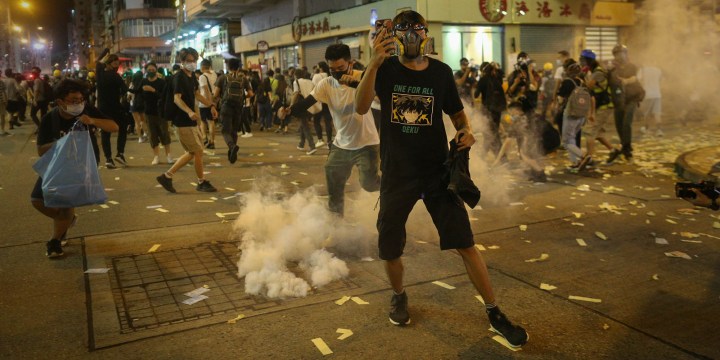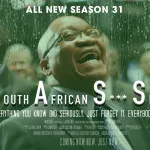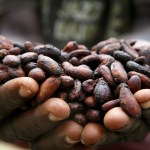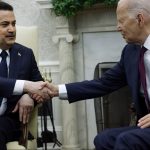OP-ED
Hong Kong at the crossroads as China ramps up propaganda

There is scant evidence for allegations by mainland China that ‘hostile foreign forces’ are behind the demonstrations in Hong Kong, but China’s elite seem to be swallowing it hook, line and sinker. Tensions with the US over Donald Trump’s trade war are fanning the flames.
In the past 10 weeks, Hong Kong has descended into chaos following attempts by the government to push through an extradition bill which includes the provision that citizens may be handed over to the People’s Republic of China (PRC) for prosecution.
Since Britain handed back Hong Kong to mainland China in 1997, the territory has been run according to the principle of “One Country Two Systems”, in which Hong Kong is jurisdictionally separate from the mainland. While the Hong Kong government has assured that extradition will not extend to political activities, many in Hong Kong don’t take the government at its word.
Over the past two decades, Beijing and its sympathisers have deployed numerous measures to water down democracy in Hong Kong, including backtracking on democratic reforms in 2014-2015, barring elected legislators from taking up office, imposing harsh sentences on pro-democracy protesters, banning a political party and abducting several publishers who have printed unflattering books on the mainland’s ruling elite.
In June 2019, several protests – including one consisting of an estimated two million people – forced the city’s chief executive, Carrie Lam, to shelve the extradition bill. But this was not enough to appease the protesters, who wanted the bill completely withdrawn, demanded that Lam step down and insisted an independent investigation be carried out into a disproportionate police response (which included the firing of tear gas and rubber bullets).
The government has since dug in its heels and the violence has spiralled. In subsequent protests, groups of Triad gang members have viciously assaulted protesters, with the police suspiciously absent from the scene. Certain Hong Kong politicians sympathetic to Beijing have been accused of colluding with these criminal elements. Police brutality has escalated, with footage of protesters being beaten senseless and fired on at close range with tear gas and other projectiles.
While the protesters have been mainly peaceful, certain elements have engaged in violence, throwing bottles and barricades at the police as well as breaking into the legislative council and – to Beijing’s horror – vandalising mainland government symbols. More recently, during a multi-day sit-in at Hong Kong airport, protesters have scuffled with the police while undercover mainland journalists were detained.
The Communist Party’s response has become increasingly hard-line. At first, there was little coverage of the events in the mainland Chinese press. However, as it became increasingly evident that the demonstrations were growing, state media went into overdrive, referring to protests as “riots” and bombarding viewers with footage of protesters hurling projectiles and verbally insulting the police.
One mainland Chinese social media user, who tried to balance this out by showing images of Hong Kong police brutality, had her posts swiftly deleted by censors. Chinese propaganda videos have been widely circulated of mainland riot police carrying out anti-riot drills, and of large-scale military deployments at the Hong Kong border. Mainland officials have accused the demonstrators of “terrorism” and of attempting a “colour revolution”, similar to those of the former Soviet Union.
The PRC has also started to push the line that the protests are in fact the nefarious work of “black hand” foreign forces, suggesting that in an attempt to thwart Chinese President Xi Jinping’s “national rejuvenation”, Euro-American forces hope to stoke democratic discontent which will spread to the mainland. While there is scant evidence for the “hostile foreign forces” allegation, China’s elite seems to be swallowing it hook, line and sinker. Pre-existing tensions with the US, ushered in by President Donald Trump’s trade war with China, fan the flames of this animosity.
The contagion has spread abroad. On campuses in New Zealand, Australia and Canada, students holding rallies in solidarity with the Hong Kong protesters have faced violence and intimidation from mainland students. Chinese ambassadors in some of these countries have egged the mainland protesters on. The identities and personal information of some of the pro-Hong Kong protesters have been shared on Chinese social media. One pro-democracy protester’s family in China received a visit from officials, warning their son not to engage in anti-China rhetoric. This has led to a broader debate on the impact of growing mainland Chinese student numbers and their impact on academic freedom on campuses abroad.
Hong Kong now stands at a critical juncture.
If Beijing decides to go the Tiananmen Square route, the repercussions will be enormous. In addition to the carnage, the economic consequences will be grave. Foreign businesses will move elsewhere and Hong Kong’s sophisticated financial markets, which stream money into mainland China, will be jeopardised, potentially alienating Chinese elites from the PRC government. Some commentators have speculated that the Communist Party will do nothing until the 70th anniversary of the founding of the PRC, on 1 October, is over.
While the Chinese military can only be invited in at Hong Kong’s behest, the Hong Kong government is filled with pro-Beijing politicians and lawmakers, making this relatively easy to do. If, on the other hand, the current war of attrition continues, Hong Kong will continue to suffer damage, both financial and reputational.
Police tactics have become increasingly shameless, including dressing up as protesters, planting evidence on them and outsourcing violence to criminal gangs. In the past week, the large-scale sit-in at the city’s main airport has caused hundreds of international flights to be cancelled. Investors are shaken.
The most obvious solution toward de-escalation is for the Hong Kong government to engage with the protesters. Unfortunately, by de-legitimising their grievances, both the Hong Kong and mainland governments portray the protesters as a small faction of hoodlums unrepresentative of the majority. However, one-third of a population coming out to protest against government policy (the equivalent of nearly 20 million South Africans protesting in a single day) can hardly be viewed as illegitimate.
Furthermore, thousands from the civil service have joined the protests (ignoring government instructions not to), as have scores of lawyers and those working in the financial sector. People have taken to the streets in such large numbers because they are being ignored by the powers that be – something the government should take seriously when considering its own role in initiating and perpetuating the crisis. Unfortunately, neither the PRC nor the Hong Kong governments seem willing to acknowledge this.
In the meanwhile, Hong Kong’s fate hangs in the balance. DM
Dr Ross Anthony was director of the Centre for Chinese Studies, Stellenbosch University, between 2014-2018, and is currently a research associate at the university.

















 Become an Insider
Become an Insider